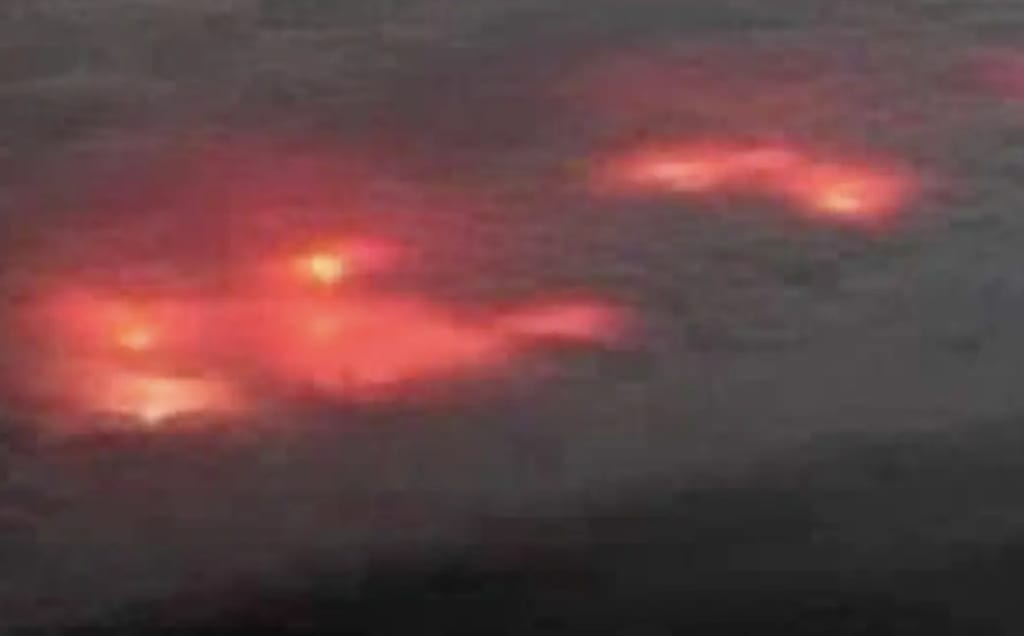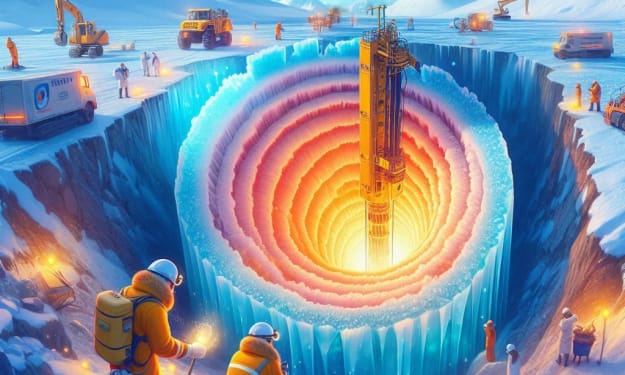Content warning
This story may contain sensitive material or discuss topics that some readers may find distressing. Reader discretion is advised. The views and opinions expressed in this story are those of the author and do not necessarily reflect the official policy or position of Vocal.
Keep your distance if you spot red holes in the sky.
What do you think these red holes are ?

A massive disturbance caused by the eruption of a volcano in the Tonga islands in January 2022 altered our understanding of GPS signals forever. The volcano erupted, sending out a massive mixture of gas and debris into the atmosphere, creating a shock wave that traveled across the entire atmosphere, all the way to Alaska, and triggered a tsunami over nearby islands in Northern Australia. It also created an odd plasma bubble in the upper atmosphere, which interfered with GPS systems for hours, making those who were affected by it and in need of accurate GPS
The ionosphere, where the Sun transforms gases into electrically charged particles, is crucial for human communication and the home of satellites like the International Space Station. Variations in the ionosphere can affect GPS signals, making it essential for locating satellites using advanced radar technology.
The radar uses invisible waves to locate friends, but can malfunction if the ionosphere particles are damaged. Scientists have developed solutions like special sensors to anticipate these changes.
Astronomers initially thought red patches in the sky were Northern Lights, but they turned out to be holes in the ionosphere. Concerns arise about potential communication and astronomy issues. To be safe, it's best to avoid these red holes, as they seal up in 10-20 minutes.
Mars's unusual green sky glow could be crucial for future missions, as it could help scientists understand the Martian atmosphere. The light is red due to its transition from a warm, wet to a cold, dry planet, possibly due to its weak gravity and lack of a strong magnetic field.Scientists are exploring the possibility that Mars' atmosphere may have been stolen by a massive impact from another object, a theory that could help develop the ideal spacecraft for future visits to the planet.
Strong thermal emission velocity enhancement, or Steve, is a phenomenon that was first discovered by regular people rather than scientists a few years ago. It is capable of withstanding Martian drag and allows us to design parachutes that gracefully descend to the Martian surface. The phenomenon was first captured on camera in 2018 by a group of amateur Aurora Chasers in Canada, who then brought it to the attention of NASA as scientists. Here are some ways that Steve differs from the Aurora.
Steve is an optical phenomenon that occasionally occurs alongside auroras, caused by Sun-like particles interacting with Earth's magnetic field and atmosphere. Scientists believe it is connected to charged particles in the ionosphere. Steve is more common in regions like Canada, Alaska, northern Europe, Australia, and New Zealand due to increased brightness during geomagnetic storms.
Astronomers have discovered that our sun can produce Aurora lights, which can last 15-30 minutes on the Sun's surface or a couple of hours on the Sun. Auroras can also occur on the sun, around 25,000 Mi above a sunspot. These lights may appear before an earthquake, as seen in Mexico in 2017.
Scientists debate whether light phenomena are related to earthquakes or ionized oxygen emissions from cracking rocks. A Finnish photographer observed a circular rainbow display in the sky, produced by sunlight striking pollen at specific angles, accompanied by star-shaped Sparkles.
Pollen disperses into various hues under sunlight, creating patterns like defraction. Pine tree pollen resembles Mickey Mouses, while the Rings and Coronas are created by aligning air sacks. High pollen levels are necessary for their appearance.
Two natural phenomena were captured simultaneously: a massive lightning strike in the Gulf of Thailand, illuminating surrounding walls like a luminous ring, and a blue blob caused by the Moon due to Earth's alignment with the satellite, allowing sunlight to shoot through Earth's atmosphere.
That's all for now. If this quenches your curiosity, please like the video and share it with your friends. If you want more, click on these videos and stay on the bright side. This turns it into a bright light with a fuzzy Halo. It happens because some of the Moonlight bounces off tiny particles in our atmosphere, making the Moon look blue in this picture. The orange Halo curving along Earth's Edge is just the atmosphere.
- Generated with https://kome.ai
About the Creator
Enjoyed the story? Support the Creator.
Subscribe for free to receive all their stories in your feed. You could also pledge your support or give them a one-off tip, letting them know you appreciate their work.





Comments
There are no comments for this story
Be the first to respond and start the conversation.